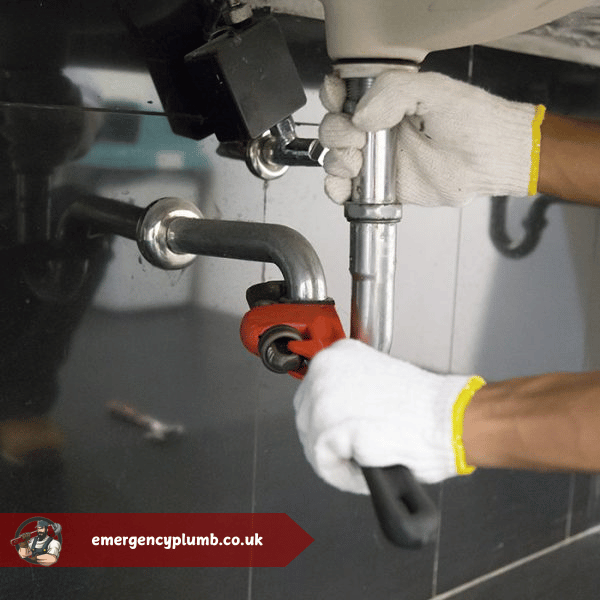Any central heating system can suffer from cold spots or radiator leaks. Draining it is the only way to get rid of such common wreckers. However, you have to consider different draining techniques and factors before carrying out such a humongous task.
But consider this your lucky day. Because we’re here to guide you about the best and easiest-to-navigate methods for effectively draining your central heating systems. Just go through our methods and apply them as it is, for the best results.
Draining and Refilling Your Central Heating System
Before you start the process, you need to make some purchases:
- Blankets/dust rags
- Radiator key
- Hosepipe
- Bucket
- Spanner
- Screwdriver
- Jubilee clip/zip tie
Now, when you’ve equipped yourself with the best tools, it’s time to get to work:
First Step: Power Down the Heating System
Switch off your boiler and give the pipes and radiators time to cool before opening or closing any valves
Second Step – Extinguish Any Open Flames
For solid-fuel boilers, make sure the fire is fully extinguished and the unit has cooled down.
Third Step: Shut Off the Water Supply Line
Locate the stop tap or isolation valve on your boiler and turn it to cut off the water supply. The last thing you want is water filtering through your pipes when you’re trying to drain your heating system.
For combi boilers, you’ll need to close the stop valve on your mains supply. This is often located under your sink. And for water storage cisterns, you’ll be able to find the valve on the system itself and stop it from supplying water to your boiler.
Fourth Step: Connect Hose to Drain Valve
Now that everything is turned off, it’s time to find the radiator in your house that has a drain-off valve. It’ll be at the bottom of the unit on either side and tends to lean out at a 45-degree angle.
When you find it, attach your garden hose pipe to the valve (with the other end in your garden drain hole or a bucket) and clip it with your jubilee clip or cable tie so it’s secure and doesn’t let any water escape.
Put a towel on the floor in the area beneath the radiator, just in case you need to catch any runoff.
Fifth Step: Allow Water Out by Turning Bleed Valves
Open every other radiator bleed valve in your house before returning to the radiator with the hosepipe and opening the drain valve. This will trigger the water to start draining out.
Top tip: Bleed your radiators before you drain your heating system to speed up the drainage process. Start at the top of your house and work your way down.
Sixth Step: Secure Every Valve Back in Place
Start by closing all the bleed valves and then finish by closing the drain-off valve. Finally, take off the hosepipe and clean up any spillage.
Seventh Step – Top Up the Heating System
Once you’ve closed all the valves, the last step is to refill your heating system. To do this, simply open the isolation valve on your boiler and wait while the water fills back up. Once it reaches the required pressure, turn your boiler back on and check your radiators to make sure they’re in good working order. They might need to be bled again to remove any air in the system. However, everything should be good to go.
No Drain Valve? Here’s How to Empty Your System
For radiators with no drain-off valve, you need to follow a different draining process. First, you need to buy some things, including:
What you’ll require:
- Pliers
- Bucket
- Hosepipe
- Old towels
- Adjustable spanner
- Speedfit tap / speedfit draining fitting from your local/online DIY store
1st Step. Power Down and Stop Water Flow
The first step before starting the process is turning off your central heating and allowing the radiators to cool completely. For combi boilers, switch it off and give the entire system (including radiators) time to cool down. If your property uses a conventional boiler, shut off the water supply first, then power down the boiler.
2nd Step. Separate the Radiator from the System
If your radiator doesn’t have a drain valve, you’ll need to disconnect it from the system by shutting off the two valves located at either end. On one side, you’ll find the regulator or thermostatic radiator valve (TRV). Simply turn it clockwise until it stops. On the opposite side is the lockshield valve – remove the plastic cover and use pliers to turn and firmly close the valve.
3rd Step. Open Bleed Valves Across Radiators
To make draining quicker, release the air from the system by opening the bleed valves on each radiator.
4th Step. Unscrew the Union Nuts Carefully
Release the coupling nut on the regulator / TRV side. Catch any leaks by placing your bucket and old towels under it. Rotate the nut anti-clockwise using your adjustable spanner until the water starts tipping into the bucket.
5th Step. Connect Hose and Begin Draining
Now when the radiator valve is switched off, you need to connect a hose to it and begin draining the central heating system. You’ll need a fitting known as a ‘speedfit tap’ or ‘speedfit draining fitting’ to properly attach the hose. Just make sure you choose the correct size for your radiator pipe. Once the tap and hose are securely connected, you can proceed with draining the system.
Call Professionals to Securely Drain Your Central Heating System
Draining your central heating system isn’t a regular job that you can do on your own professionally, without a professional. Therefore, it is only wise that you hire a drainage specialist to reduce the risks of damage and improper drainage.
Our solution is none other than the Emergency Plumber London. Backed by years of experience, the company provides 24-hour emergency drainage services for different systems, including central heating systems. Call 02036748514 or e-mail info@emergencyplumb.co.uk to book our drainage services today.


